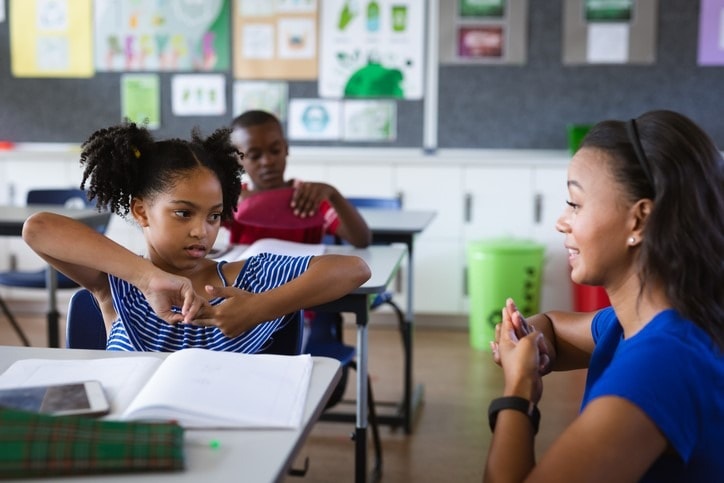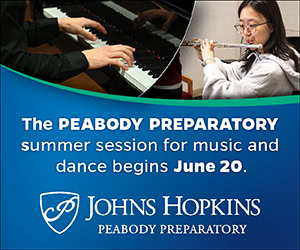NAfME BLOG
Using Trauma-Informed Care to Re-Frame Puzzling Student Behaviors in the Music Classroom

/ News Posts / Using Trauma-Informed Care to Re-Frame Puzzling Student Behaviors in the Music Classroom
Using Trauma-Informed Care to Re-Frame Puzzling Student Behaviors in the Music Classroom
By NAfME Members Erin Price and Shannan Hibbard
Presenting An Equity-Centered Trauma-Lens for the General Music Teacher at the “NAfME is ME!” 2022 NAfME National Conference in National Harbor, Maryland.
Quick! Grab something to write with and on. Think of an incident that occurred in your classroom. Can you write about it? What factors were at play in the situation?
Today, we challenge you to engage in a self-guided active journaling process aimed to help you reframe puzzling and challenging student behaviors through a trauma-informed lens.
As teachers, we have worked in settings in which student behaviors were frequently confusing, frustrating, and, at times felt like threats to safety. Shannan began her career teaching K-6 music in the Detroit Public Schools; she was puzzled by why students did not trust her and tested her “authority.” Erin worked in schools affiliated with residential psychiatric treatment facilities, serving students with advanced behavioral health needs. In our jobs, we have seen behaviors come seemingly out of nowhere, and we are pretty sure you have, too.
Challenging Behaviors
When a behavior arises that seems disproportionate to the situation at hand, does not appear to be triggered by external stimuli, or escalates rapidly, it is possible that the student is exhibiting a trauma response. Often, these responses, or reactions occurring due to a known or unknown, internal, or external trigger, appear to “come out of nowhere” for music educators. Trauma responses may look like explosive reactions to benign interactions, physical and verbal aggression, fleeing behaviors, shut-down behaviors, or dissociative behaviors, where the student engages in a mental process to disconnect themselves from their thoughts, body, or the experience at hand (Herman, 1997). These reactions are hallmarks of a child that is stuck in an escalated state of response, oftentimes functioning in a pervasive fight or flight state.
In our role as teachers, these interactions can be frustrating or bewildering. We may resent the child as we usher them from circle time to the time away corner, thinking silently about how they are taking away class time from other students. We may feel frustrated when it seems that no amount of reward or consequence is helping the child function in the role we assign them—as a properly “managed” student. We may find ourselves telling our colleagues that the “incident came out of nowhere” or crying at our desks, labeling ourselves “bad” teachers. Maybe we rage against the machine, wishing there were more relevant pre-service/ in-service training surrounding student violence. We might feel shame, inadequacy, and regret. Worse still, we might leave school traumatized by our students themselves, reminded of our past trauma, becoming traumatized through our students’ stories, or developing secondary traumatic stress from the painful interactions occurring in our building or classroom. Through a deeper understanding of the nuances of these challenging situations, we might move from states of anger, shame, or blame, to ones of empowerment.
Impact of Trauma
Data indicate high levels of exposure to potentially traumatic events in the United States, with more than half of children experiencing a traumatic event before reaching adulthood (Finkelhor et al., 2005). Following trauma, there is a significant negative impact on the lives of children, even those who do not meet diagnostic criteria for trauma-related disorders (Center for Substance Abuse Treatment, 2014). Trauma is documented to lead to behavioral health problems (Center for Substance Abuse Treatment, 2014; Walrath et al., 2006; Whitson et al., 2012) and emotional difficulties (Burns et al., 2004; Shonk & Cicchetti, 2001). Students who are traumatized have higher rates of special education placement (Cole et al., 2005; Shonk & Cicchetti, 2001), and may require specialized intervention. Similarities between posttraumatic stress disorder and emotional/behavioral disorder diagnostic criteria, paired with a lack of relevant diagnostic codes (van der Kolk, 2005; 2014) may lead to the misdiagnosis of music students with behavioral difficulties (Price, 2022).
Following trauma, students may develop maladaptive behaviors that pose difficulties to functioning within the expectations of the typical classroom. Chronic states of hypervigilance, or hyperaroused autonomic functioning, may leave to angry outbursts, overreactions, or avoidant/fleeing behaviors. Dysregulated states may cause children to encounter difficulty sustaining their attention and vacillating moods that impair relationship building. Neurological changes, occurring post-trauma and entirely out of the student’s control, might lead to reduced self-regulation, deficits in social skills, non-compliance, disruption, violence, withdrawal, isolation, sexually inappropriate behavior, and regression. Hostile attributional biases, or the tendency to assume hostile intent or mislabel facial signaling, documented in children surviving trauma, may cause benign interactions to be viewed as threatening (Dodge et al., 1990; Pollak et al., 2000). During these trauma reactions, we as educators might personalize the behaviors, which are beyond the student’s control.
Trauma-Informed Lens
So, what is a music teacher to do? Given trauma’s devastating impact, it may seem logical to parse out students we believe are exhibiting trauma responses or go deeper into students’ backgrounds to see who might be affected. Venet (2021) posits this process of being a “trauma detective” is harmful to students, and rather suggests employing a trauma lens. Seeing through a trauma lens acknowledges that trauma is pervasive throughout society and in schools, and most often stems from various forms of oppression like poverty and racism. This way of seeing acknowledges that any child can live with the lasting effects of trauma, and that assuming certain students as traumatized often implicates our biases and prejudices. A trauma lens recognizes that pinpointing “trauma students” encourages further marginalization and harm to students who are often most vulnerable in schools. A trauma lens requires us to offer compassion to all students with a chance to express themselves, and to be seen and heard.
“Seeing through a trauma lens acknowledges that trauma is pervasive throughout society and in schools, and most often stems from various forms of oppression like poverty and racism.”
Compassionate responses, however, can also be confused for pity, or looking down on another from above (Hendricks, 2018). Pity contributes to deficit lenses of students by placing the focus on all they lack. Pity also contributes to a salvationist narrative, or the idea that students need us to save them. Salvationist narratives are implicated in the need to control and have power over students. The power of a teacher can be very threatening to students who live with the lasting effects of trauma.
Therefore, the learning environment must be set up for students and teachers to share power. To be on equal footing requires us to form mutual relationships with students. Strong teacher-student relationships create a sense of belonging and can buffer trauma responses in students (Hibbard, 2021). Mutuality can be most challenging when teachers are triggered by students’ trauma responses, and might act in ways fueled by anger, blame, or a desire to punish. When a child’s behavior is deemed to be out-of-control, strategies associated with “good classroom management” can lead to isolation, exclusion, and other types of humiliation for the child. Unfortunately, teachers’ attempts to gain control often exacerbate students’ stress responses and create a tension in the relationship that breaches trust. Therefore, the foundation of a trauma lens is a music teacher’s constant commitment to building, maintaining, and mending relationships with students, which may create a sense of belonging and stand as the foundation for music learning. Equitable relationships can disrupt triggering trauma response cycles (for both students and teachers), but more importantly, can offer a buffer from trauma through moments of shared joy, and musical expression (Hibbard & Price, in press).
As music educators, we must find ways, musical and otherwise, that encourage us to know and see students beyond their trauma (Ginright, 2015; Love, 2019), and beyond the types of behaviors that we may be tempted to pathologize. For this, there is no formula. Seeing with a trauma lens requires teachers to continually ask “Are my actions grounded in cultivating safety or control?” (Education for Literation Network & Critical Resistance Editorial Collective, 2021). Do I structure musical learning in a manner that opens avenues for authentic engagement with music curriculum and facilitates opportunities for musical expression? Do I share decision-making and power with students? Do I allow a space for students to be themselves? Do I allow a space for students to feel and express joy?
“Trauma-Informed Care principles include safety, choice, collaboration, trustworthiness, and empowerment.”
Music teachers might receive further guidance with a trauma lens by applying principles of Trauma-Informed Care (Institute on Trauma and Trauma-Informed Care, 2015) to their classroom environment. Trauma-Informed Care principles include safety, choice, collaboration, trustworthiness, and empowerment.
| Safety | Choice | Collaboration | Trustworthiness | Empowerment | |
| Ensuring physical and emotional safety | Individual has choice and control | Decisions are made collaboratively; power is shared | Task clarity, consistency, honoring interpersonal boundaries | Prioritizing empowerment and skill building | |
| Proactive
|
Placing students in a circular or horseshoe seating arrangement, stating safety goals and expectations, monitoring the environment, evaluating physical positioning | Engaging in planning that includes opportunities for students to choose stations, assessment, mediums, repertoire, etc., allowing students to enter the activity when they are ready | Co-creating musical pieces, forms, arrangement, art displays, games, movements, and class expectations | Asking permission, establishing a routine, choosing unveiled language, giving students notice | Prioritizing student ideas, proactive verbal affirmation |
| Reactive | Moving objects away from a student in crisis, utilizing “stop, do” language | Reminding a student who is cursing at a peer that they have the opportunity to choose different words | Working with an overwhelmed student to find a solution | Apologizing when you inevitably forget to do something, taking ownership for misunderstandings | Responding with praise when students display target skills or turn their behaviors around |
Now, we invite you to return to the puzzling scenario you wrote about at the beginning of this article. Within a trauma lens, refer directly above to the principles and examples of trauma-informed care. What issues, in terms of the principles above, could have been compromised prior to this incident? What principles did/could you employ to repair the situation with the student (reactive)? Can you refer to these principles to see how this situation could be prevented in the future (proactive)? Do you know what the student is passionate about? Do you know what brings the student joy?
“Seeing with a trauma lens asks us to do the hard work of seeing our even our most challenging students as humans and musicians with unlimited potential, and that we will work it out together.”
We hope you are encouraged. You are not alone—this work is challenging and requires we use our imagination to find solutions alongside students. Seeing with a trauma lens asks us to do the hard work of seeing our even our most challenging students as humans and musicians with unlimited potential, and that we will work it out together.
References
Burns, B.J., Phillips, S.D., Wagner, H.R., Barth, R.P., Kolko, D.J., Campbell, Y., & Landsverk, (2004). Mental health need and access to mental health services by youths involved with child welfare: A national survey. Journal of the American Academy of Child & Adolescent Psychiatry, 43(8), 960–970.
Center for Substance Abuse Treatment. (2014). Trauma-informed care in behavioral health services (Treatment Improvement Protocol (TIP) Series, No. 57). Substance Abuse and Mental Health Services Administration (US).
Cole, P. M., Usher, B. A., & Cargo, A. P. (1993). Cognitive risk and its association with risk for disruptive behavior disorder in preschoolers. Journal of Clinical Child Psychology, 22(2), 154–164.
Dodge, K. A., Price, J. M., Bachorowski, J., & Newman, J. P. (1990). Hostile attributional biases in severely aggressive adolescents. Journal of Abnormal Psychology, 99(4), 385–392.
Education for Literation Network & Critical Resistance Editorial Collective (2021). Lessons in liberation: An abolitionist toolkit for educators. AK Press.
Finkelhor, D., Ormrod, R., Turner, H., & Hamby, S. L. (2005). The victimization of children and youth: A comprehensive national survey. Child Maltreatment, 10(1), 5–25.
Ginwright, S. (2015). Hope and healing in urban education: How urban activists and teachers are reclaiming matters of the heart. Routledge.
Hendricks, K. S. (2018). Compassionate music teaching: A framework for motivation and engagement in the 21st Century. Rowman & Littlefield.
Herman, J. (1997). Trauma and recovery: The aftermath of violence- from domestic abuse to political terror (2nd ed.). Basic Books.
Hibbard, S. L., & Price, E. (in press). Trauma: A compassionate lens for music teaching. In K. S. Hendricks (Ed.), The Oxford Handbook of Care in Music Education (pp. xx-xx). Oxford University Press.
Hibbard, S. L. (2021). Disrupting “What we know too well:” A relational frame for considering trauma in music education. In D. Bradley & J. Hess (Eds.), Trauma and resilience in music education: Haunted melodies (pp. 35–48). Routledge Publications.
Love, B. L. (2019). We want to do more than survive: Abolitionist teaching and the pursuit of educational freedom. Beacon Press.
Pollak, S. D., Cicchetti, D., Hornung, K., & Reed, A. (2000). Recognizing emotion in faces: Developmental effects of child abuse and neglect. Developmental Psychology, 36(5), 679–688.
Price, E. E. (2022). Behavioral strategies for trauma-informed elementary general music education for students with emotional/behavioral disorders: A review of the literature. Update: Applications of Research in Music Education. Advance online publication.
Shonk, S. M., & Cicchetti, D. (2001). Maltreatment, competency deficits, and risk for academic and behavioral maladjustment. Developmental Psychology, 37(1), 3–17.
Walrath, C. M., Ybarra, M. L., Sheehan, A. K., Holden, E. W., & Burns, B. J. (2006). Impact of maltreatment on children served in community mental health programs. Journal of Emotional and Behavioral Disorders, 14(3), 143–156.
Whitson, M. L., Connell, C. M., Bernard, S., & Kaufman, J. S. (2012). An examination of exposure to traumatic events and symptoms and strengths for children served in a behavioral health system of care. Journal of Emotional and Behavioral Disorders, 20(3), 193–207.
van der Kolk, B. A. (2005). Developmental trauma disorder: Toward a rational diagnosis for children with complex trauma histories. Psychiatric Annals, 35(5), 401–408.
van der Kolk, B. A. (2014). The body keeps the score: Brain, mind, and body in the healing of trauma. Penguin Publishing Group.
Venet, A. S. (2021). Equity-centered trauma-informed education. W. W. Norton and Company.
About the authors:
 NAfME member Erin Price, M.M. is a special education music teacher and researcher in the Greater Harrisburg area. Prior to teaching general music and elementary special education music for Commonwealth Charter Academy, Ms. Price worked in multiple Pennsylvania Approved Private Schools for students with Emotional Disturbance, where she served K-21 students with advanced inpatient and outpatient behavioral support needs. In addition to her work as a general music teacher, Ms. Price is a doctoral candidate at Boston University and frequently presents research on trauma-informed music pedagogy at state, national, and international conferences.
NAfME member Erin Price, M.M. is a special education music teacher and researcher in the Greater Harrisburg area. Prior to teaching general music and elementary special education music for Commonwealth Charter Academy, Ms. Price worked in multiple Pennsylvania Approved Private Schools for students with Emotional Disturbance, where she served K-21 students with advanced inpatient and outpatient behavioral support needs. In addition to her work as a general music teacher, Ms. Price is a doctoral candidate at Boston University and frequently presents research on trauma-informed music pedagogy at state, national, and international conferences.

Photo: Kimberly P. Mitchell
NAfME member Shannan Hibbard, PhD, teaches P-6 general music to students in the Detroit Public Schools Community District. Shannan’s narrative and philosophical research centers on relationships in the music classroom with focus on trauma-awareness, abolitionist approaches, social justice ally development, creativity, and spirituality. She received her undergraduate, masters, and PhD in music education from the University of Michigan. Shannan currently serves as President-Elect of the Michigan Music Education Association.
Did this blog spur new ideas for your music program? Share them on Amplify! Interested in reprinting this article? Please review the reprint guidelines.
The National Association for Music Education (NAfME) provides a number of forums for the sharing of information and opinion, including blogs and postings on our website, articles and columns in our magazines and journals, and postings to our Amplify member portal. Unless specifically noted, the views expressed in these media do not necessarily represent the policy or views of the Association, its officers, or its employees.
October 25, 2022. © National Association for Music Education (NAfME.org)
Published Date
October 25, 2022
Category
- Culturally Relevant Teaching
- Social Emotional Learning
Copyright
October 25, 2022. © National Association for Music Education (NAfME.org)






